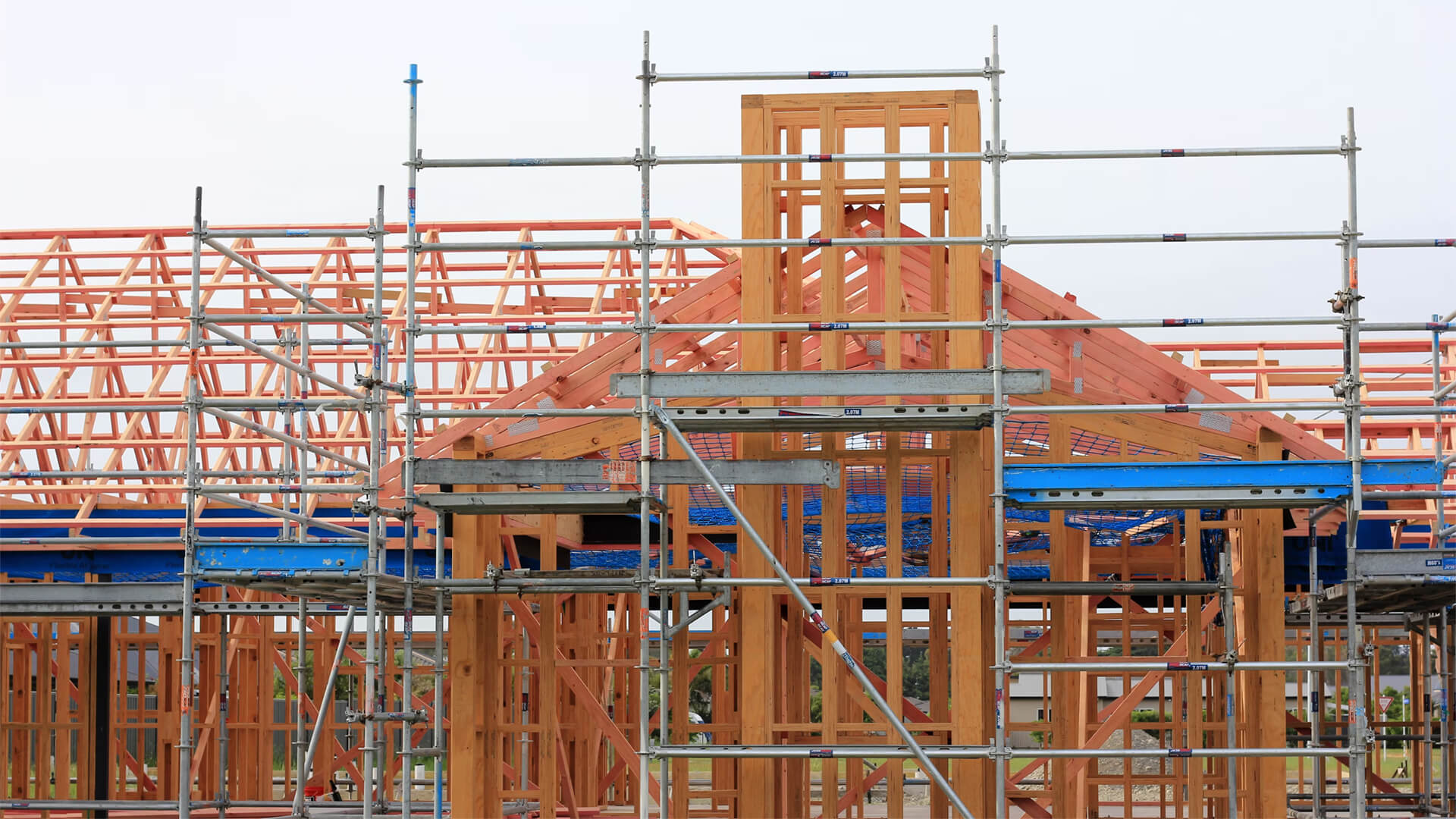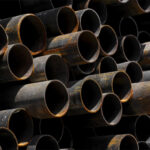Does everyone remember that bedtime story about the Three Little Pigs and the Big Bad Wolf? Well, the Trump administration is doing its best wolf impression and trying to blow the entire housing industry down. (We’re running out of metaphors for this administration, so cut us some slack on this one)
There are a lot of things hurting the US housing industry. The labor shortage will only worsen as more undocumented workers are deported. Material costs are on the rise, thanks to tariffs. All the stuff that goes into a home, whether you’re furnishing it or renovating it, is now more expensive due to tariffs. Mortgage rates are at 20-year highs and available capital is shrinking. Insurance companies are taking a hit. Not a fun time…
The pressure is on for the housing market, and it’s only a matter of time before the foundation cracks. What was a relatively healthy market just months ago is now the problem child in the US. And if that doesn’t worry you, we’ll talk about the recession tomorrow.
Transcript
Hey, all. Peter Zeihan here. Coming to you from New York City, near Rockefeller Park. That’s like new Jersey or something over there. We’re gonna look over here, Trade Center and, Lady Liberty’s over there somewhere. Yeah, there. Anyway, today we’re going to continue our firehose series about how the Trump administration’s domestic and international policies are affecting the American economy.
And today we’re going to tackle housing. Now, there’s a lot of inputs that go into a successful housing industry. But generally you’re looking at the big four. The first one is going to be labor based on where you are in the country, seasonality, all that good stuff, somewhere between 20 and 40% of the cost of a house is just from labor.
And as a rule, somewhere between 25% and 35% of that labor is immigrant labor, with that number going to 40 to 50%. If you’re in California or Texas. So if you do what the Trump administration says it wants to do and deport 5 million illegal laborers, you can imagine what that’s going to do to housing costs, because there simply aren’t enough people in the country to fill those jobs.
And that’s before you consider that immigrants play an outsized role in the trade. So carpenters, electricians, that sort of thing. Plumbers. So you can see that turning housing into a very expensive proposition just right off the bat, the next raw material inputs, which again, 20 to 40% were based on where you are, what kind of structure you’re building.
And these fall into a bunch of different categories. First, most obviously is wood for framing. The second largest source comes from Canada that now has a 25% tariff. Next up are steel and aluminum, which are used for framing, flashings window frames, structural support, nails, that sort of thing. Right now, again, 25% tariff on both of those items.
Next up is one that people don’t think about very much. And that’s copper. But you know, if you don’t have copper, you’re not going to have electricity. Now, most of the world’s copper, or at least mostly copper that comes to the United States, is either from Canada or the United States or Mexico or especially Chile. But that’s the raw copper.
Once you turn it into wires and electrical outlets and all that other assorted stuff, most of that stuff is going to be coming from China. And now there is a 145% tariff, which basically means we stopped shipping stuff from China for this product category. About a month ago. And even if we were to flip the switch back on today, we wouldn’t get new shipments for another two months.
It just takes that long for everything to spin up and cross the ocean. Then there’s things like tile and stone. Most of that comes from the Mediterranean. That’s another 20% tariff. So for all of the things that go into the physicality of the House, we’re looking at significantly higher rates of cost. Assuming you can get the stuff at, oh, the third category is what you put into the house.
Once you buy the house, for anyone who’s a homeowner, you know, you’ve just started to spend your money. You then have to put things into it, whether it’s furniture or washer dryers, refrigerators, or you have to do an overhaul. As a rule, in the United States, for every 3 to $4 we spend on the primary purchase of housing, we spend another dollar or two on add on costs to fill it up with stuff, or to overhaul it, or put in new drywall doing additions, whatever it happens to be.
All of that has gotten more expensive to and then forth finance between the baby boomers retiring and liquidating their savings, and the Trump administration planning to increase the federal budget deficit by $1 trillion a year, the availability of financing for the private sector has shrunk precipitously. And we’re only at the beginning. Now, in, the end of you see, you’ll probably see this May 1st.
We’re only be beginning to see the increases of what that’s going to do. The financing costs. Right now, mortgages are at about a 20 year high. Expect that to get significantly higher. Now if you look back historically, like back to the 70s when mortgage rates were like 15% or more, we’re nowhere close to that yet. But we’re getting there pretty quick because of the problem and the discombobulation between supply and demand.
And that’s before you consider Trump’s tariffs, which and Trump’s financial policies, which are only going to drive financing up more. And then finally, something that’s not technically a housing cost, but we all have to have if we’re gonna get a mortgage insurance, because as much as construction is going to become more expensive, it is nothing compared to what’s going to happen to re construction.
Whenever there is a national disaster, a storm, a hurricane, a forced fire, and you need to rebuild, all of a sudden you need to rebuild lots and lots of things in exactly the same spot, which means that the cost for the repairs and the recovery are significantly higher than what happened before. Which means the insurance guys are getting hit on all sides.
All of the input costs are going up. Insurance guys, basically take your premiums and invest them into the market in order to generate capital that they’re going to need to pay out claims while the markets are tanking because of Trump’s policies. In addition, you have a real problem with foreign access of capital because that money is going away.
Maybe referenced the finance video we did a couple of days ago. I would not want to be the insurance. Right. Because between the level of populism and Trump government and the popularity of populism, the American political scene right now, the normal thing that the company would do would be to raise premiums and to reduce payouts. But populism isn’t going to allow that to happen. So we will have federal action to grind away the insurance companies in a way that is designed to benefit the consumer.
And the only way that insurance companies can deal with that is by stopping to offer coverage. Boy, so this all adds up to a housing sector that all of a sudden, from being an actually pretty good space four months ago, is looking to be the sector that is potentially most damaged by the mid and long term trends that are coming together.
And that’s really just the beginning, because we’re also about to have a recession. We’ll talk about that tomorrow.








